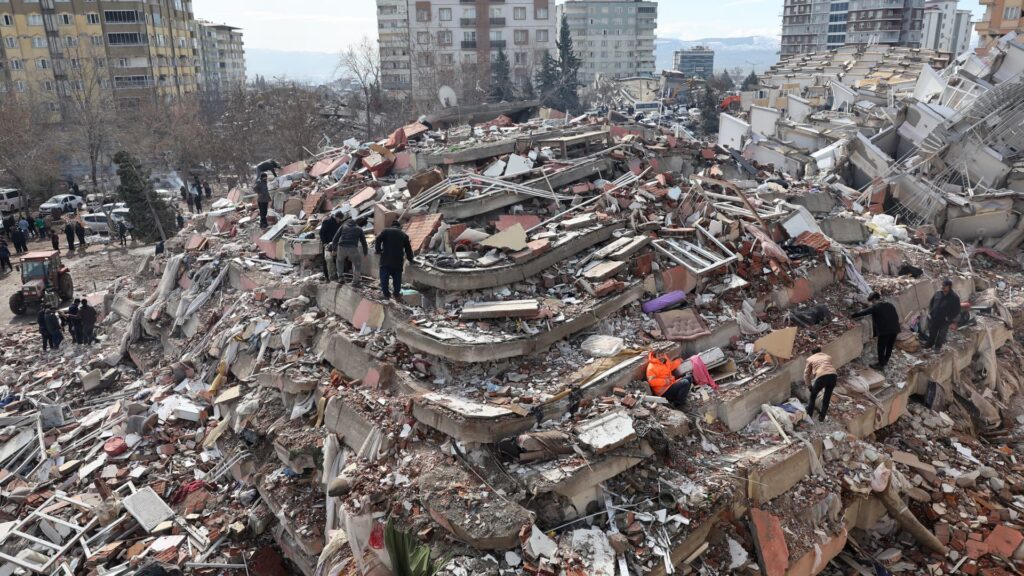Civilians look for survivors under the rubble of collapsed buildings in Kahramanmaras, close to the quake’s epicentre, the day after a 7.8-magnitude earthquake struck the country’s southeast, on February 7, 2023.
Adem Altan | AFP | Getty Images
Life for millions across Turkey and Syria changed forever on Monday, as two consecutive earthquakes sent shockwaves across hundreds of miles.
Nine hours apart and measuring a magnitude of 7.8 in Turkey and 7.5 in Syria on the Richter scale, the quakes were the region’s strongest in nearly a century.
At the time of writing, the death toll from the quakes is more than 12,000, with many still missing and critically injured. The World Health Organization put the number of people affected by the disaster at 23 million. At least 6,000 buildings collapsed, many with residents still inside them. Rescue efforts continue to be the top priority, with some 25,000 deployed in Turkey and thousands more sent in from overseas — but a bitter winter storm now threatens the lives of the survivors and of those still trapped under rubble.
Syria, ravaged by 12 years of war and terrorism, is the least prepared to deal with such a crisis. Its infrastructure is heavily depleted, and the country remains under Western sanctions. Thousands of those in the affected areas are already refugees or internally displaced people.
With the dust of the catastrophe still settling, regional analysts are zoning in on the longer-term rippling effect that the catastrophe could have on Turkey, a country whose 85 million-strong population was already mired in economic problems — and whose military, economy, and politics have a major impact far beyond its borders.
A crucial year for Turkey
This year will serve as a critical inflection point for Turkey, as it approaches a presidential election on May 14. The result of that election — whether current President Recep Tayyip Erdogan stays in power or not — has massive consequences for Turkey’s population, economy,…
Read the full article here





